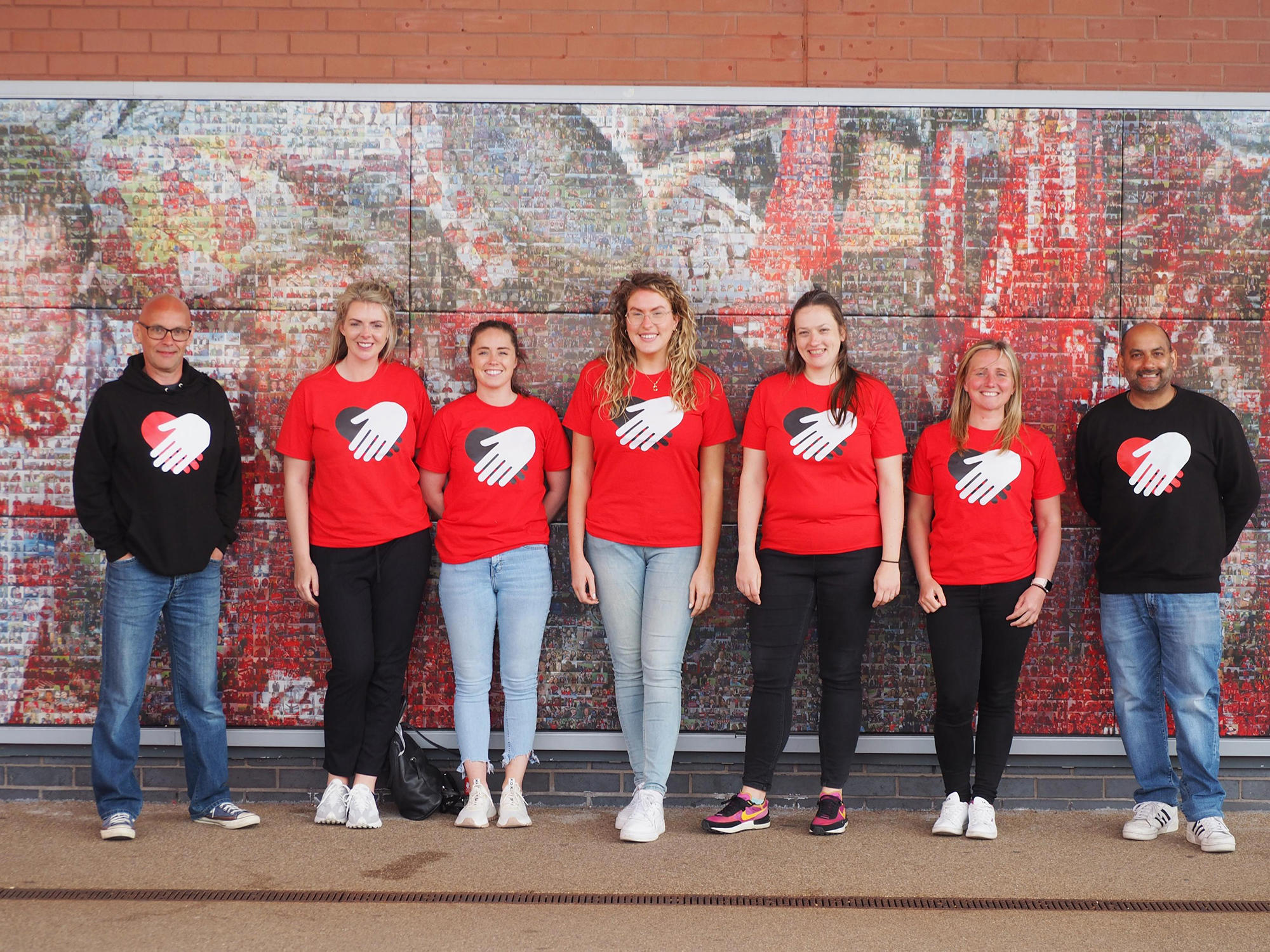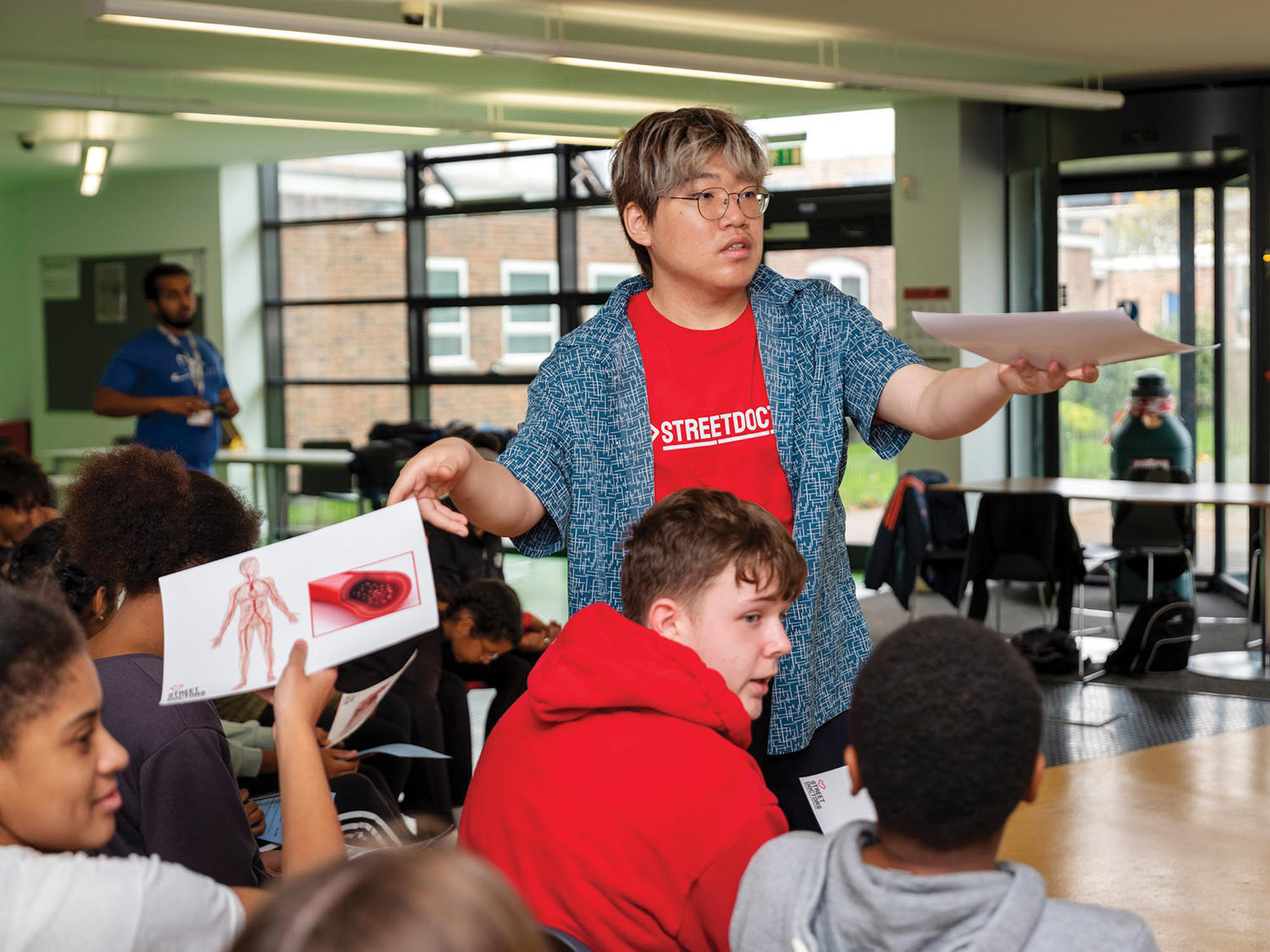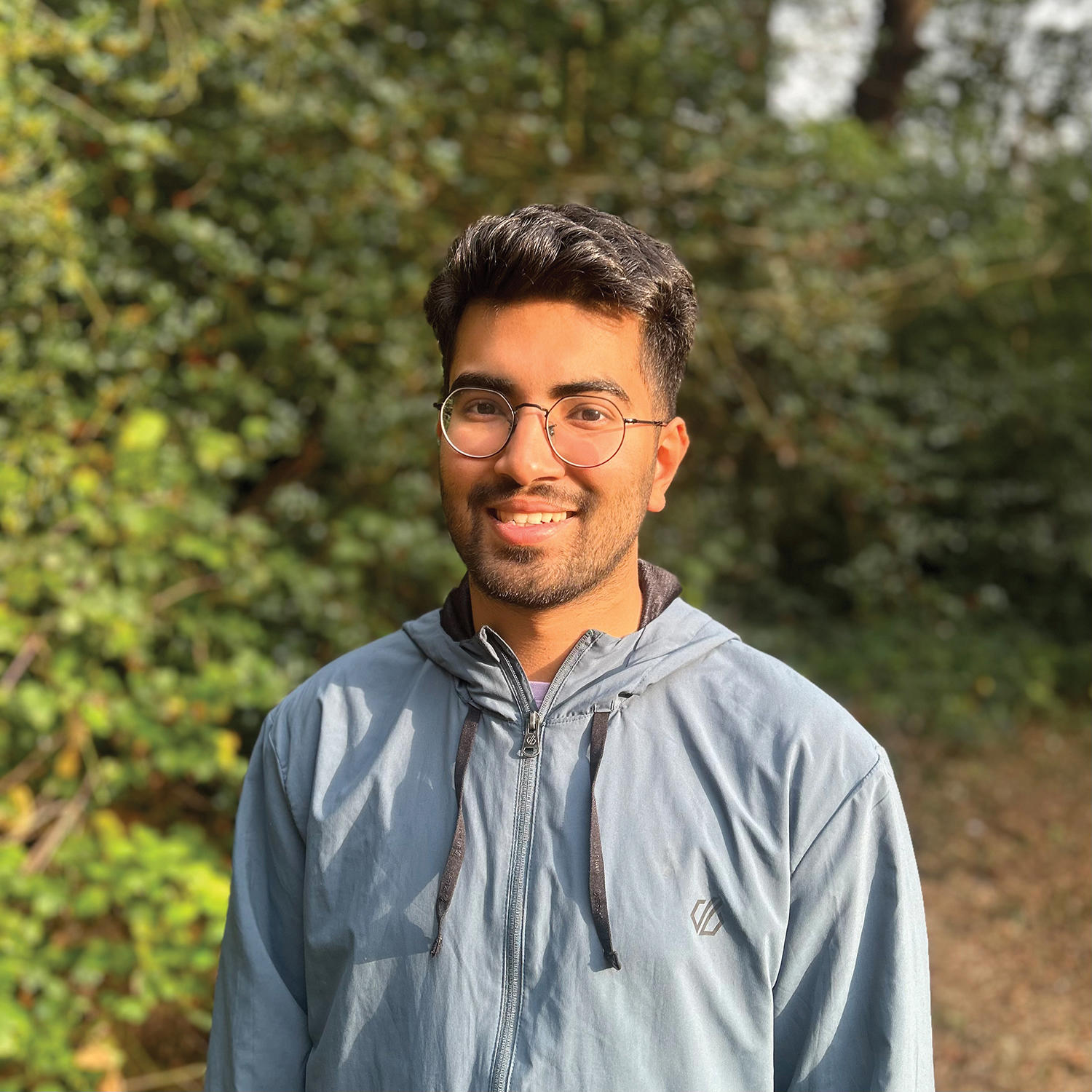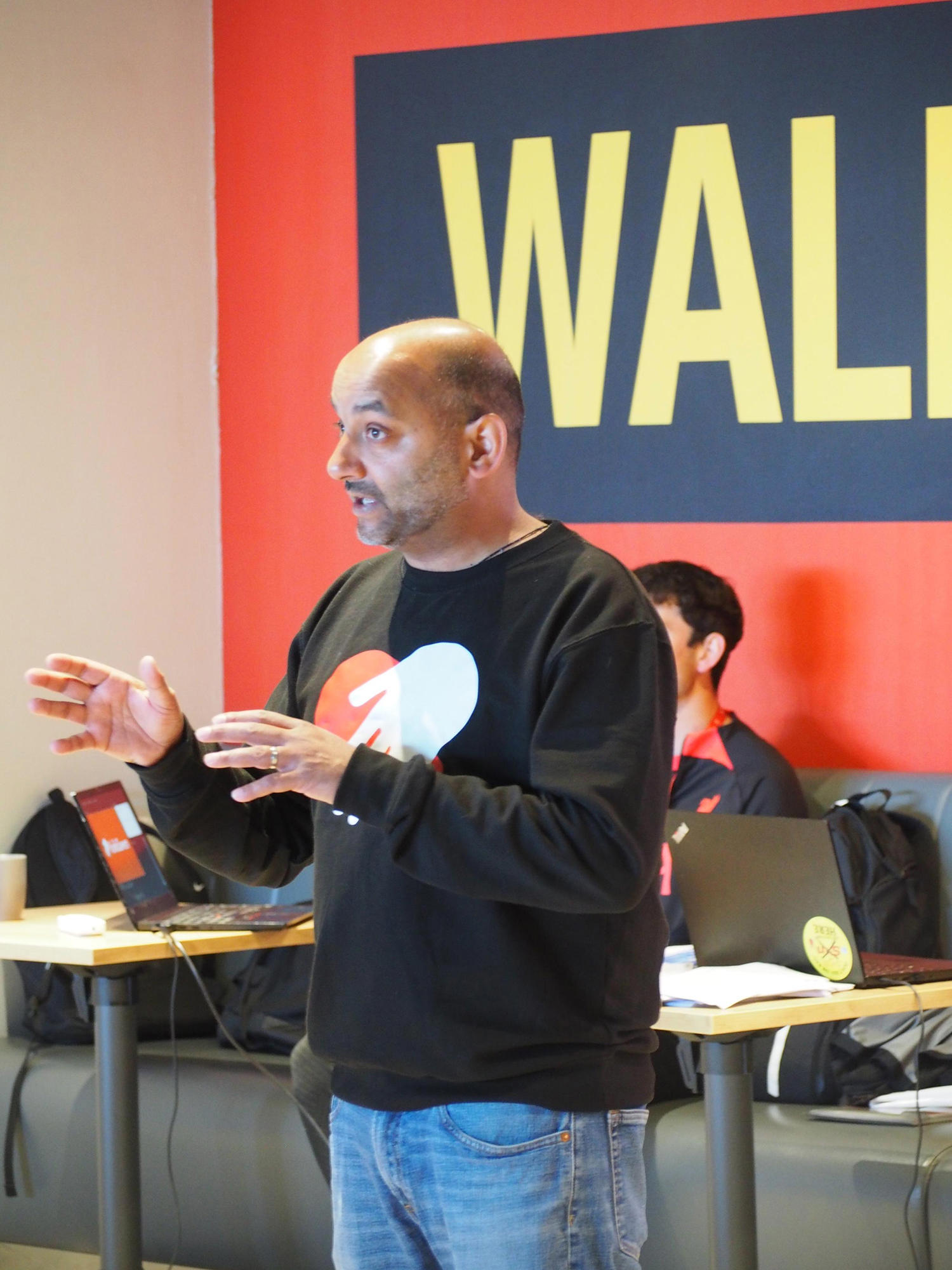As an experienced trauma surgeon, Nikhil Misra is used to seeing patients in life-or-death conditions and in desperate need being suddenly thrust before him.
While his patients come from all ages and backgrounds, many of those he has encountered on the operating table are young people who have been the victims of severe and violent injury resulting from knife violence.
One such incident five years ago, however, proved so catalytic for Liverpool-based Mr Misra that he decided he had to do more than simply treat the physical wounds wrought by knife crime, and instead work with others inside and outside of the health service to promote prevention.
‘We had had a really bad summer for fatalities from knife wounds in young people that culminated in a case where a young lad taking part in an organised fight in a field near his school ended up with a single stab injury to his groin,’ he reflects.
‘He exsanguinated. Ran across the field and came into the trauma centre with cardiac arrest. We did incredibly aggressive resuscitative surgery on him and the whole trauma team were brilliant that day, but we couldn’t save his life – I couldn’t save his life.
 WALL OF RESOLVE: KnifeSavers volunteers prepare to educate young people
WALL OF RESOLVE: KnifeSavers volunteers prepare to educate young people
‘The immediate few minutes after that [losing his patient] of having to pause and then go and speak to his dad and break the shattering, horrible news. I went back home that night, spent time with my family and thought, “This needs to get better, this can’t be right”.’
Knife violence, particularly among young people, is a long-standing and tragic social phenomenon that blights communities in all parts of the UK, with the latest figures released by the ONS (Office for National Statistics) painting a grim picture.
Incidents doubled
While the number of assaults with injury or with intent to cause serious harm involving knives fell from 22,097 at the end of March last year to 21,555 during the same period in 2023, this figure is almost twice as high as that recorded a decade earlier in March 2013.
ONS data specifically related to homicide, meanwhile, reveals that of the 69 murders involving victims aged 13 to 19 years old recorded at the end of March 2022, 74 per cent of these killings were as the result of a knife or sharp instrument, compared with just 41 per cent of all victims of homicide.
Mr Misra’s experience back in 2018 ultimately led him to found KnifeSavers, a charity which primarily seeks to educate young people about the dangers of knife violence as well as provide basic clinical skills to help save lives in the event of someone being stabbed.
The charity has also sought to improve victims’ chances of survival by caching 1,500 bleeding control packs in different parts of Liverpool and Merseyside, with the locations of these potentially life-saving resources plotted and accessible via an app.
I thought, “This needs to get better, this can’t be right”Mr Misra
KnifeSavers’ work, however, is just one component complementing a broader, ‘public health’ response to knife violence in communities within Liverpool and Merseyside.
Determining what exactly a public health approach to knife violence equates to can vary, but one vital aspect is that of different institutions such as health services and the police sharing data in line with the precepts set out in the Cardiff violence prevention model.
Devised by Professor Jonathan Shepherd, the Cardiff model prescribes collecting data on location, nature and scale of violence, determining the factors which influence the risk for violence and then using this analysis to devise and implement interventions at a local level which can later be scaled up if required.
This approach was used in the UK back in 2005 with the launch of the first VRU (Violence Reduction Unit) by Strathclyde Police in Glasgow, a city that at that time had one of the highest murder rates in Europe.
Data-driven
Underpinned by the belief that violence is a preventable not inevitable outcome in society, the VRU used pooled data to help direct and target resources, as well as seeking to identify and address the factors deemed likely to increase an individual or community’s vulnerability to violence.
It was an approach credited with delivering a 35 per cent reduction in Scotland’s murder rate between 2010 and 2020, and a success story that ultimately saw the UK Government provide a total of £70m to establish VRUs across 18 English police-force regions in 2019. Alongside his role with KnifeSavers, Mr Misra now serves as the health lead for the MVRP (Merseyside Violence Reduction Partnership) and says that sharing data has been critical to enhancing his charity’s work.
‘When I first started off [with the bleeding-control packs] it was essentially a scattergun approach, putting them in areas where we thought they would be needed,’ he explains.
‘Since then, we’ve made some incredibly strong connections with Merseyside police and work with their intelligence analysts who have helped us to identify areas that may benefit more from bleeding control packs.
‘We then look at data from the violence-reduction partnership in terms of where the incidents occur as well as data provided by North West Ambulance Service and emergency departments via the MVRP so that we know where patients [of knife violence] are coming to us from and who they are in terms of demographics.
 PEER SUPPORT: A StreetDoctors volunteer teaches first-aid skills
PEER SUPPORT: A StreetDoctors volunteer teaches first-aid skills
‘This approach has made me totally rethink my way of how I deliver healthcare on the wards in the hospital, how we can effect change as clinicians. I think we could play a massive role in that, which as doctors we may not fully realise. Just pausing, taking a beat, and taking time to listen to the person we are delivering healthcare to could make such a huge difference.’
Data sharing between emergency departments and other bodies took place prior to the roll-out of VRUs via Information Sharing to Tackle Violence, which sees the sharing of anonymised data of patients who have been the victim of violence with the police and with local community safety partnerships.
Looking at data to develop a better understanding of where knife violence may be happening is, however, only one part of a public health response.
While numbers can provide a better sense of the bigger picture, being able to understand and relate to those most likely to be affected by knife violence and trying to provide guidance and support beyond just repairing their physical wounds, is something final year medical student Vishal Chahwala firmly believes.
Having written a dissertation examining hospital-based violence intervention programmes while studying medicine at Barts and The London, Mr Chahwala has for five years volunteered for the charity StreetDoctors.
Taking time to listen to the person we are delivering healthcare to could make such a huge differenceMr Misra
 CHAHWALA: ‘It’s allowed me to have a real understanding of violence as an issue’
CHAHWALA: ‘It’s allowed me to have a real understanding of violence as an issue’
As a national organisation, it trains young people affected by violence with emergency lifesaving skills and increases their understanding of its medical and psychological consequences.
The training is delivered by a network of healthcare volunteers, including student doctors, nurses and paramedics to a range of youth partners across the country including youth and sports providers, educational settings and criminal justice services.
He says interacting with young people, many of whom have been directly or indirectly affected by knife crime, had given him a much greater appreciation and understanding of the societal causes and risk-factors around the phenomenon.
‘I think as medical professionals we are slowly getting better at viewing people with diseases rather than just the disease on its own,’ he says.
‘We’re beginning to move away from a system where we stitch people back up and then send them back to the same environment that victimised them in the first place. However, there still needs to be a greater appreciation of the risk factors of violence and what makes young people more vulnerable to violence.
We have a responsibility to know how we can refer patients to the right servicesMr Chahwala
‘I think a lot of the pushback to a public health approach is that mentality of “I need to fix their [patients’] diabetes and heart disease, I don’t have the time to worry about their social issues”,’ says Mr Chahwala.
‘I understand and agree with the argument that medical professionals can’t fix everything on their own, but we have a responsibility to know how we can refer patients to the right services and refer them to the right people.’
Mr Chahwala says training young people in clinical lifesaving skills not only serves a practical purpose, but also provides a mutually beneficial opportunity for both sides to learn from each other.
‘It’s allowed me to have a real understanding of violence as an issue,’ he says.
‘One of the really dangerous and worrying misconceptions that some young people have is that there are safe places in the body to be stabbed. I’ve heard a few times young people talk about knowing peers who have stabbed someone in their thigh because they thought it was safe [and] they’ve ended up with a murder charge instead.
This approach has made me totally rethink my way of how I deliver healthcareMr Misra
 MISRA: Uses data to learn more about knife-crime hot spots
MISRA: Uses data to learn more about knife-crime hot spots
‘StreetDoctors sessions go beyond just teaching “this is how you save a life”, it gives these young people an opportunity to have some time with a mentor, with a role model. It’s a safe space for them to ask questions and talk about issues that are important to them.’
Engaging with those affected by knife violence in ‘reachable’ rather than ‘teachable’ fashion, is something Mr Misra also recognises the value of, having welcomed non-clinical youth workers known as youth navigators into his own ward.
These navigators, who are deployed by the MVRP, aim to engage with the young victims of violence and attempt to gain a better understanding of their lives and social circumstances, and what interventions might reduce their risk factors of knife crime in the future.
‘The first thing we [as doctors] have to do is to understand why this person, who has been stabbed, in front of me – what brought them to that point in their life and how can I make a difference?’ says Mr Misra.
‘I’m a lifelong Liverpool fan so when I go in to see a patient I initially talk about football. That breaks the ice and allows them to see me in a different light, and for us to communicate at a different level, as someone they can talk to as a person, not just a doctor.’
The KnifeSavers training team, as well as the senior leadership team of Kristian Tattam and Nicole Russell, are all volunteers who run the campaign and deliver the training in their spare time.
The number of clinical volunteers has grown from a group of four to almost 80 people currently, and the campaign is being started in a number of other locations around the country.

